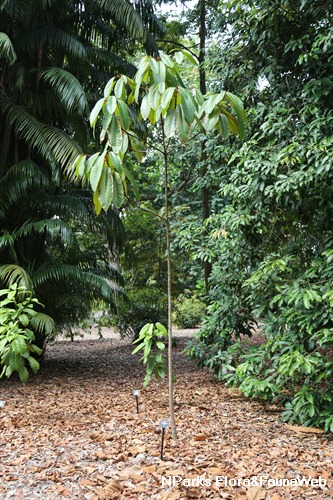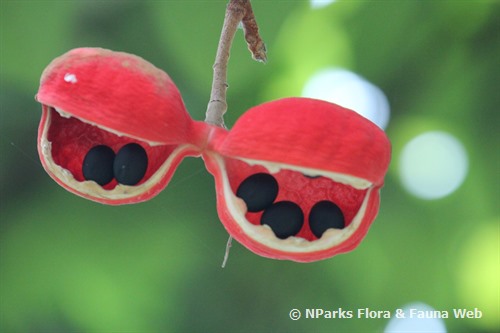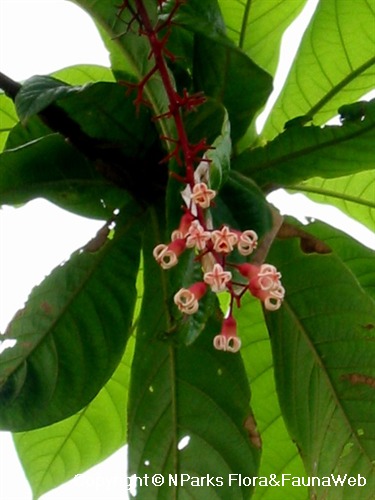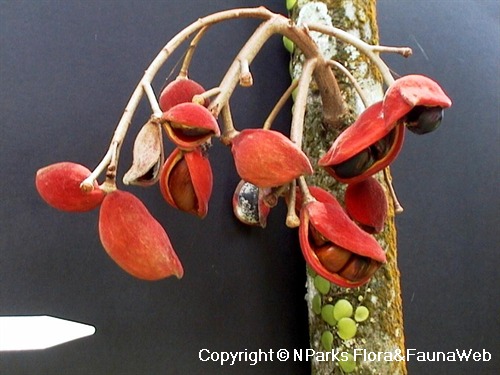
Back
Sterculia monosperma Vent.
| Family Name: | Malvaceae |
| Synonyms: | Sterculia nobilis |
| Common Name: | Seven Sisters' Fruit, China Chestnut, Kelompang |
Name
Classifications and Characteristics
| Plant Division | Angiosperms (Flowering Seed Plants) (Dicotyledon) |
|---|---|
| Plant Growth Form | Tree |
| Lifespan (in Singapore) | Perennial |
| Mode of Nutrition | Autotrophic |
Biogeography
| Native Distribution | Southern China, Taiwan, India, Indonesia, Malaysia, Thailand, Vietnam |
|---|---|
| Preferred Climate Zone | Tropical |
Description and Ethnobotany
| Others - Plant Morphology | Growth Form: Large tree with rounded crown. Habitat: Occurs in dense, tropical forests. Trunk: Bark is brown to black. Foliage: Glabrous leaves are oblong or elliptic with wavy leaf margin (8 - 25 cm long, 5 - 15 cm wide). Leaves have short petioles (2 - 3.5 cm) and 6 - 10 lateral veins (veins directly connected to the midvein). Flowers: Unisexual flowers lack petals, but have a creamy white, bell-shaped calyx (outermost layer of the flower) that becomes reddish (1 cm wide). The calyx has 5 - 6 linear lobes that arch towards the center and unite at the apex. Male flowers are more numerous than female flowers which are slightly larger. Fruits: Bright red, leathery fruits are known as follicles which break open along 1 seam (5 cm long, 2 - 3 cm wide). Fruits have a pointed apex and contain 1 - 4 ellipsoid, brown to black seeds. Landscaping: This species has an attractive shape and provides excellent shade. Cultivation: Plant this species in fertile, well-drained soil. Propagation: Propagate by seed or stem cuttings. Etymology: The genus "Sterculia" is named after the Roman god Sterculius, the god of manure. The reference is to the foul-smelling flowers of some species in this genus. The species epithet "monosperma" means one-seeded and is derived from the Greek words for single ("monos") and seed ("sperma"). It refers to how fruits often contain only 1 large seed. |
|---|---|
| Ethnobotanical Uses | Edible Plant Parts : Edible Stems Others: Food: Although some sources state that boiled seeds are edible, Berry (1980) found that the seed oil contains 19% cyclopropenoid fatty acids (CPFA), compounds shown to cause physiological problems in animals. Cooking the seeds did not significantly reduce the amount of CPFA, so it is best not to eat the seeds. |
Landscaping Features
| Desirable Plant Features | Ornamental Flowers, Ornamental Fruits |
|---|---|
| Usage Hazard - Cons | Toxic Upon Ingestion |
| Usage Hazard - Cons Remarks | Seeds are poisonous upon ingestion. |
Fauna, Pollination and Dispersal
| Seed or Spore Dispersal | Abiotic (Gravity) |
|---|
Plant Care and Propagation
| Light Preference | Full Sun |
|---|---|
| Water Preference | Moderate Water |
| Plant Growth Rate | Moderate |
Foliar
| Mature Foliage Colour(s) | Green |
|---|---|
| Mature Foliage Texture(s) | Smooth, Glossy / Shiny, Leathery |
| Foliar Type | Simple / Unifoliate |
| Foliar Shape(s) | Non-Palm Foliage (Elliptical, Oblong) |
| Foliar Venation | Pinnate / Net |
| Foliar Margin | Entire - Wavy / Undulate |
| Foliar Apex - Tip | Acute, Obtuse |
| Foliar Base | Rounded / Obtuse |
| Typical Foliar Area | Macrophyll ( 182.25cm2 - 1640.25 cm2 ) |
| Leaf Area Index (LAI) for Green Plot Ratio | 3.0 (Tree - Intermediate Canopy) |
Floral (Angiosperm)
| Flower Colour(s) | Red |
|---|---|
| Flower Symmetry | Radial |
| Individual Flower Shape | Campaulate / Bell-shaped |
| Inflorescence Type | Panicle |
Fruit, Seed and Spore
| Mature Fruit Colour(s) | Red |
|---|---|
| Fruit Classification | Simple Fruit |
| Fruit Type | Dehiscent Dry Fruit , Follicle |
Image Repository
Others
| Master ID | 1846 |
|---|---|
| Species ID | 3139 |
| Flora Disclaimer | The information in this website has been compiled from reliable sources, such as reference works on medicinal plants. It is not a substitute for medical advice or treatment and NParks does not purport to provide any medical advice. Readers should always consult his/her physician before using or consuming a plant for medicinal purposes. |

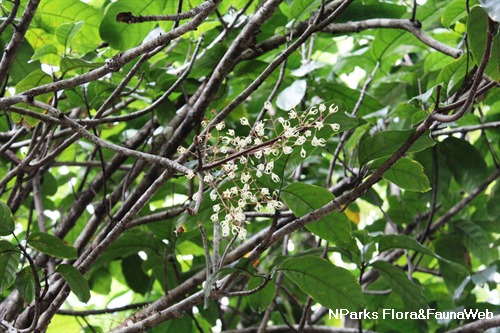
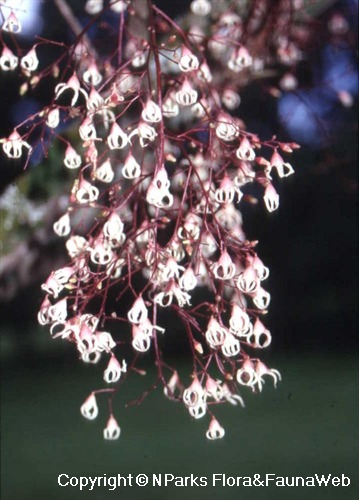
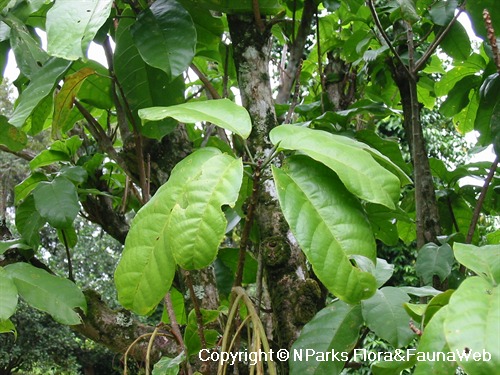
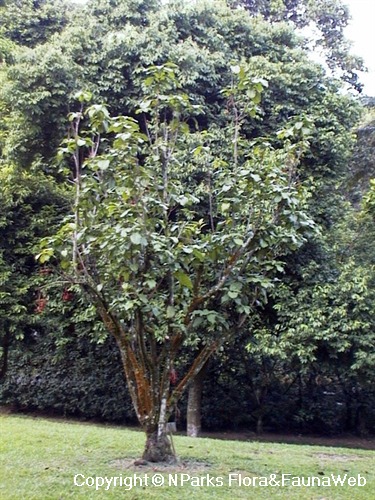
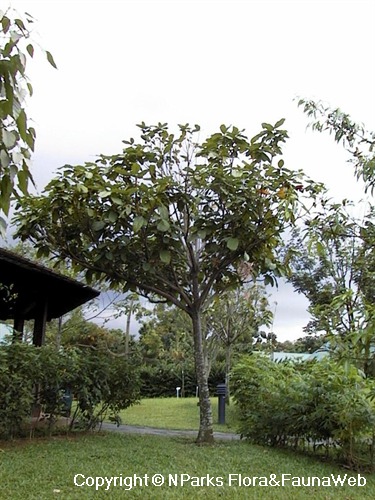
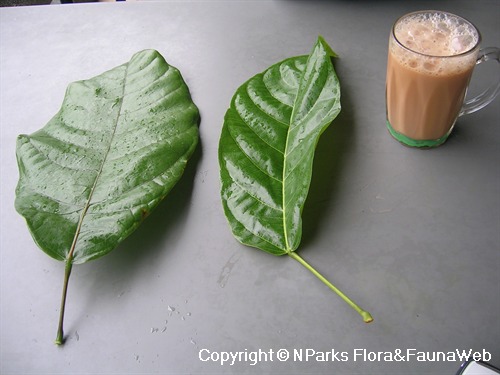
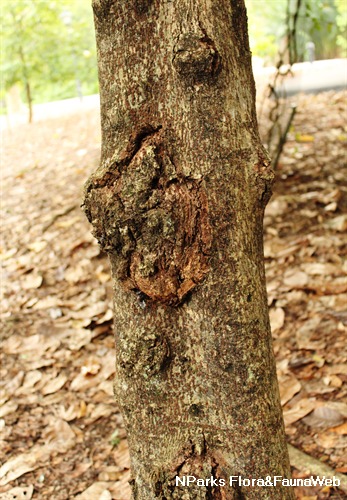
_lowres.jpg)
